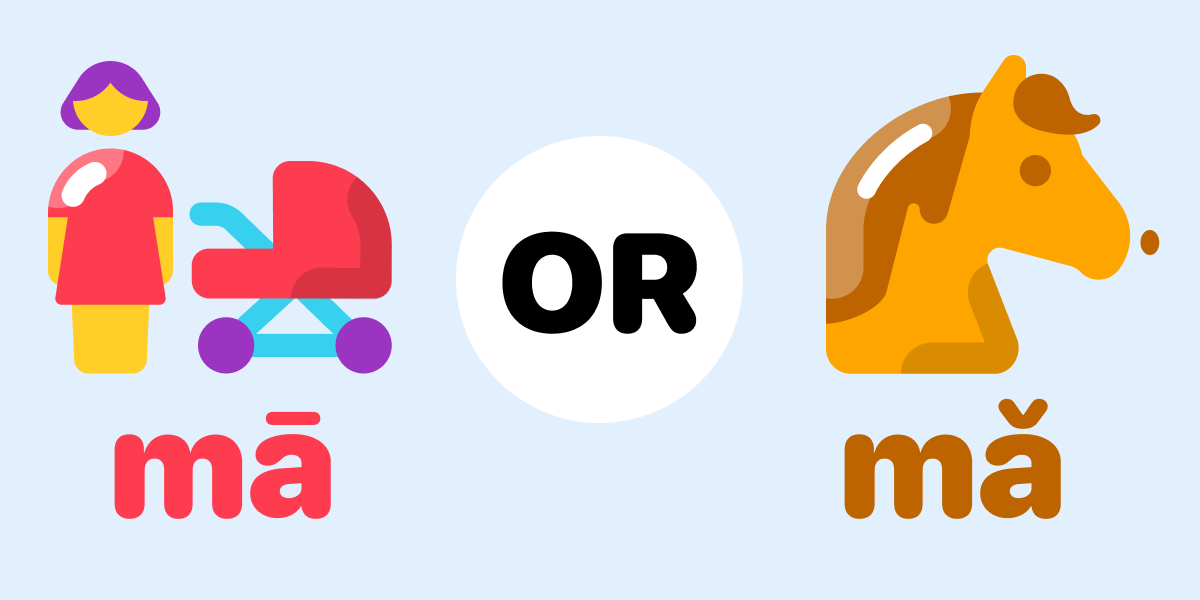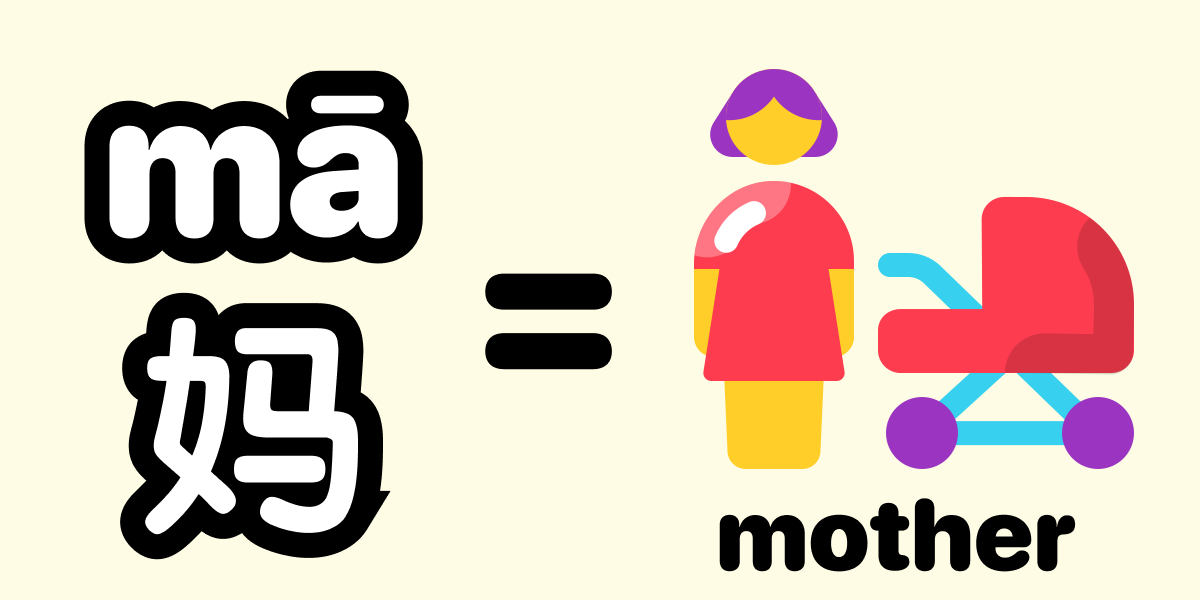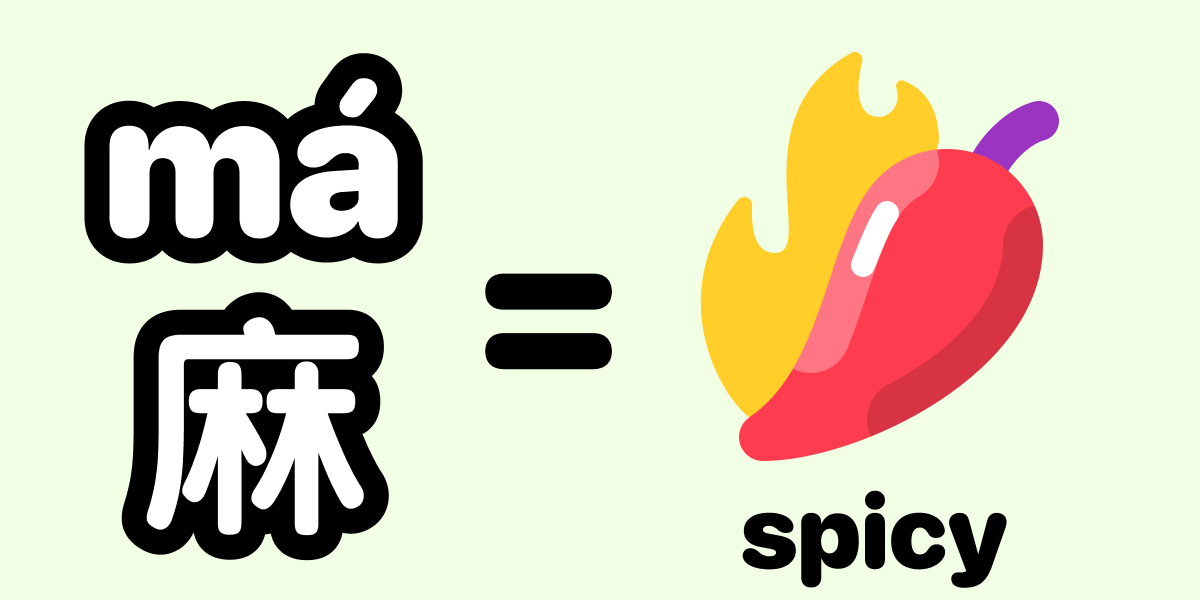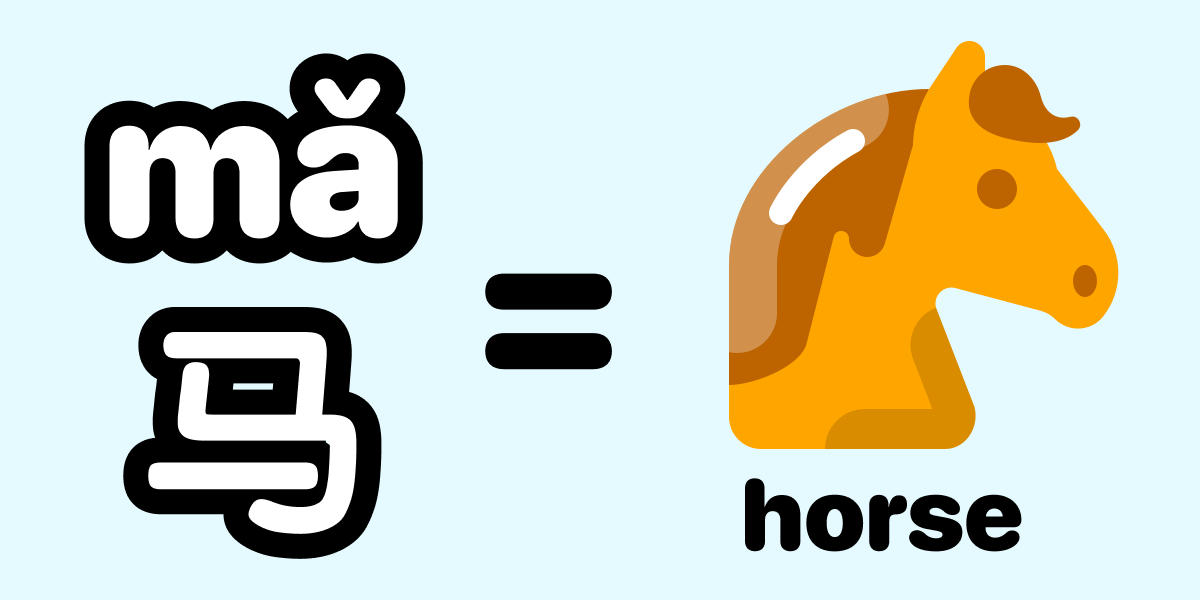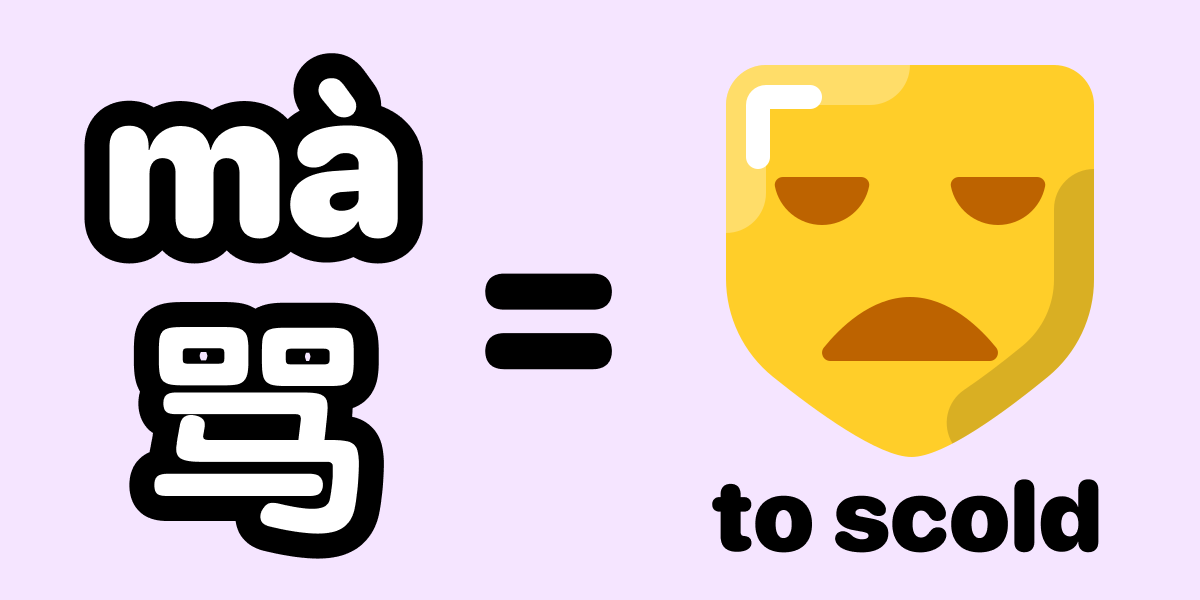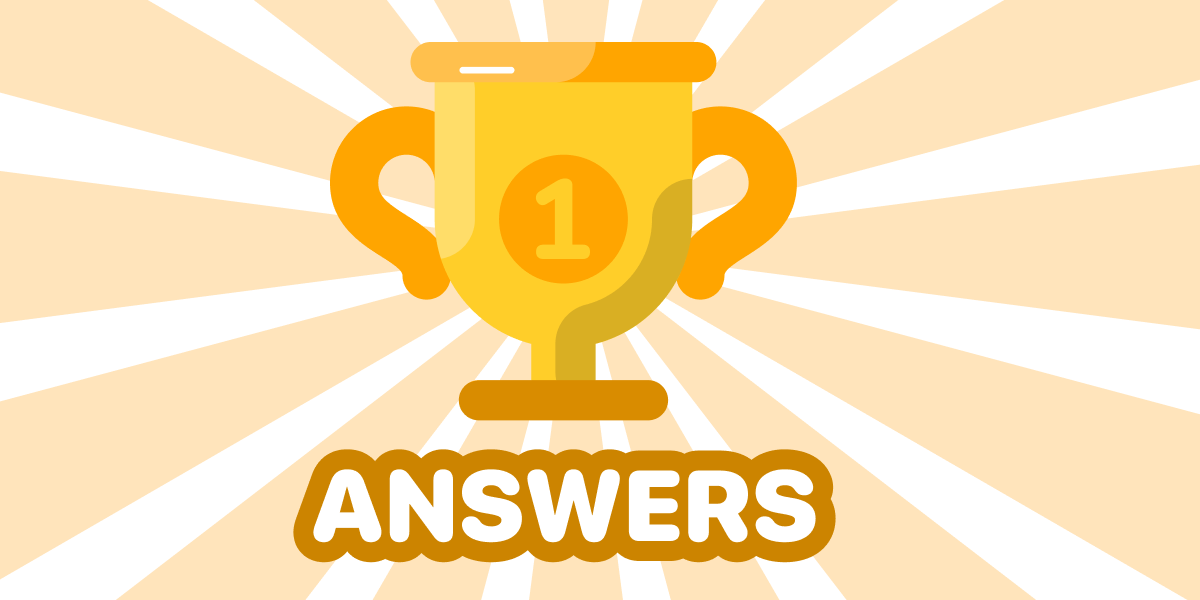妈 or 马? Maorma? Don't confuse your mom for a horse
The syllable “ma” is commonly used to explain the four Chinese tones to beginners, because ma can either mean mother, numb, horse or scold, depending on which of the four tones is used.
Here’s a guide to each variation of “ma”, complete with audio examples. See if you can recognize and hear the difference! Practice saying the words after you listen to the audio.
First Tone = mā
妈 mā mother
Example: 妈不在家。
Mom is not at home.
Example: 妈和我
Mom and I.
Second Tone = má
麻 má numb
Example: 麻辣
Spicy and numbing (as in Sichuan food)
Example: 麻雀
Sparrow
Third Tone = mǎ
马 mǎ horse
Example: 骑马
Ride a horse
Example: 斑马
Striped horse (i.e. a zebra)
Fourth Tone = mà
骂 mà scold
Example: 骂人
To scold someone
Example: 他被老师骂。
He was scolded by the teacher.
Quiz Time!
See if you can identify which ma each of the following 4 sentences contains: mā 妈, má 麻, mǎ 马 or mà 骂.
(answers at bottom of page)
Question A:
Question B:
Question C:
Question D:
Quiz Answers
Question A: má 麻 (full sentence: 我喜欢吃麻辣)
Question B: mǎ 马 (full sentence: 木马)
Question C: mā 妈 (full sentence: 爸妈)
Question D: mà 骂 (full sentence: 被骂)
Did you get it right?
Finally, a shameless plug:
If you haven’t tried out our app yet, you might want to give it a spin. It offers a fun & easy way to learn and practice Chinese tones (and the first lesson teaches you how to recognize ma!)
 Kai Loh
Kai Loh
